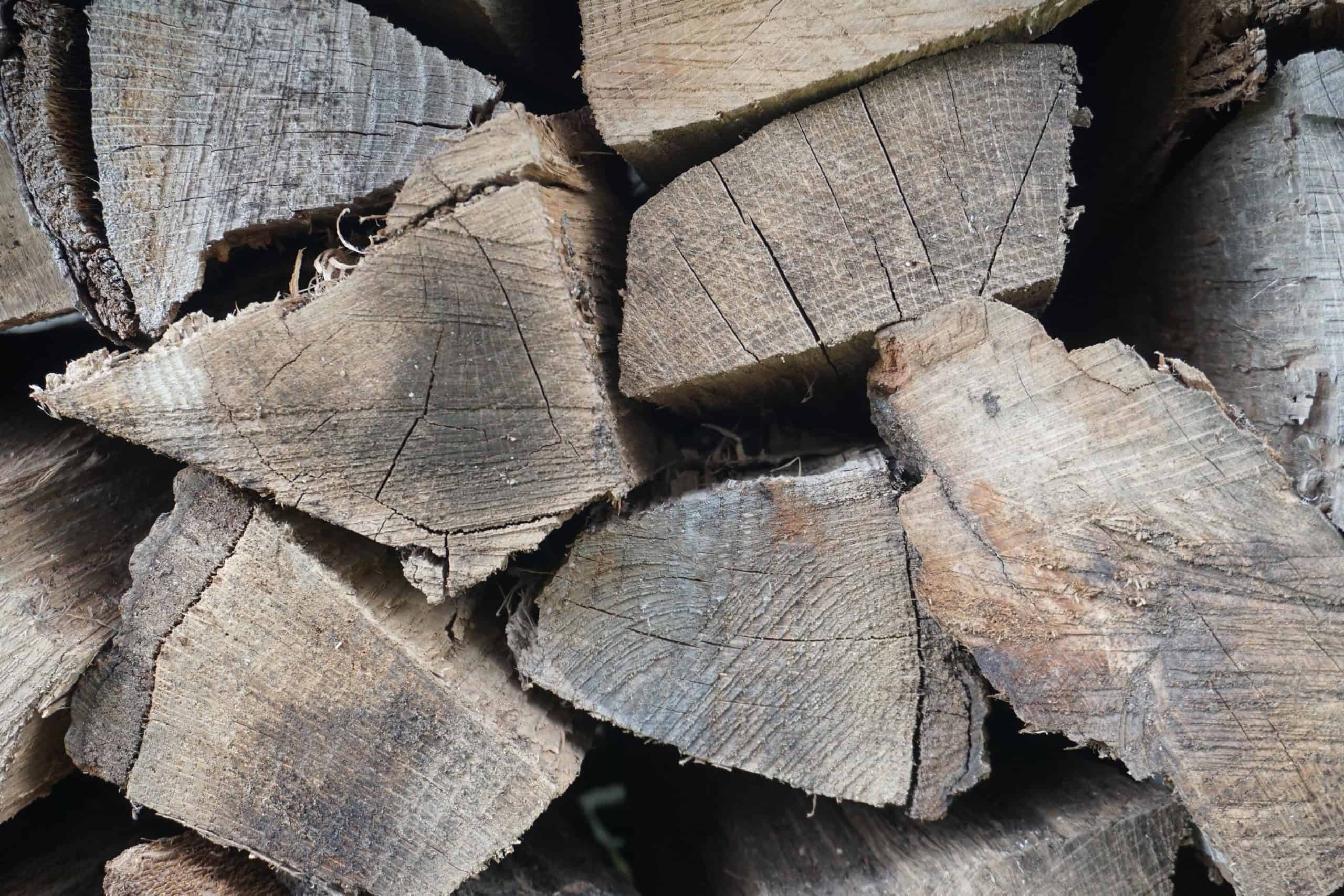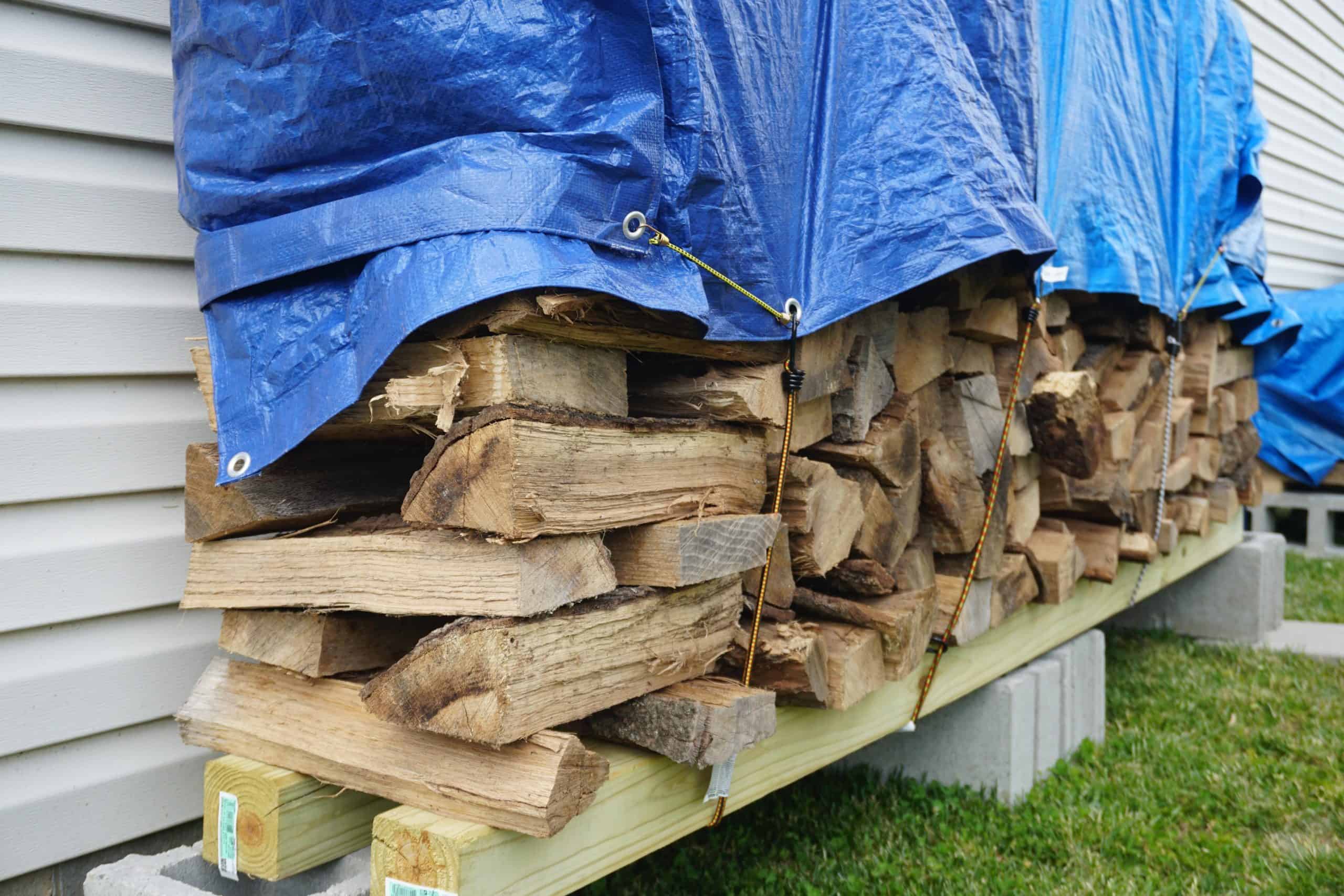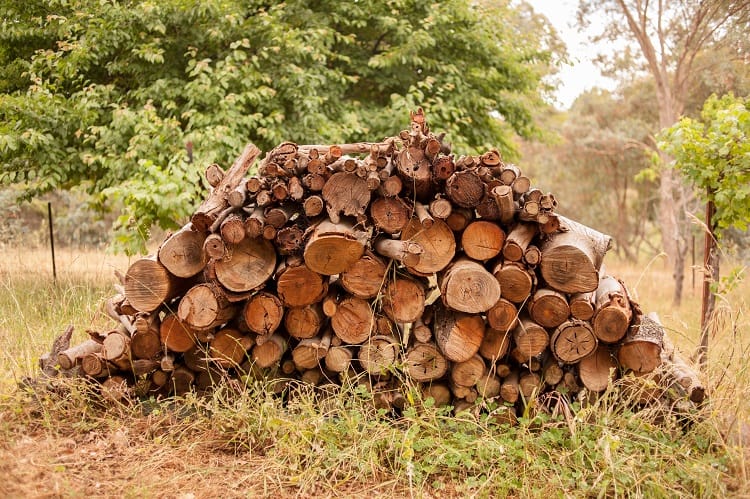If you have never bought firewood before, or are still green (pun intended) to the process, this article will help clear up the confusion and ensure you get the best value for your money. Firewood jargon can be confusing!
And with standards and volumes varying by the region, this only adds to the difficulty.
What is the Best Firewood?
The best firewood is what’s most readily available in your area and is seasoned, split, and priced reasonably. Ideally, you want hardwood like oak rather than softwood like pine. Oak is readily available in most parts of the United States.
The most notable difference between hardwood and softwood is the burn time. The wood fibers in hardwood are dense, thus a log of the same size will take longer to burn, usually burn hotter, and produce less smoke than a softwood.
Hardwoods
- Hickory
- Beech
- Birch
- Locust
- Apple
- Mulberry
- White Oak
- Maple
- Red Oak
- White Ash
- Yellow Burch
- Elm Cherry
- Sycamore
Softwoods
- Fir
- Adler
- Pine
- Spruce
- Aspen
- Butternut
- Willow
- Basswood
- Cedar
You will be surprised by how much wood you’ll use, so it’s a good idea to find a local supplier that has a common type in stock year-round. Do not worry so much about the type of wood. Instead, focus on whether or not it’s been well-seasoned and split.
There’s plenty of time after that to start getting picky about types, aromas, etc.

You can tell this firewood is well seasoned because it’s cracked on the ends and has most of the bark falling off. ‘Seasoned’ firewood means it has been sitting outdoors and protected from the rain for at least 6 months. The seasoning process for most woods is around 18 months or even longer. When firewood has first been split, it’s considered ‘green,’ meaning the moisture content is still high.
PRO-TIP
Seasoned firewood is typically cracked on the ends, has the bark falling off, and is significantly lighter than green wood. When in doubt, also check the sound it makes when dropped on a hard surface. Dry wood has a hollow sound, while wood that is still green, has a muffled, thick sound.
After it has sat outside for several months, moisture leaves the wood, and the wood becomes dry enough to burn.
How Much Is a Cord of Wood?
Wood is typically sold by the cord, or in fractions of a cord – usually a ⅓ or ½. Expect to pay the divided price of a full cord. For example, if a full cord costs $300, a half cord will cost $150, or a third will cost $100.
- A ⅓ of a cord is sometimes referred to as a face cord.
- The size of a face cord is 16” wide by 8’ long by 4’ high.
- A full cord is 4’ wide, by 8’ long by 4’ high.
- A full cord is equivalent to 128 cubic feet (4 x 8 x 4 = 128).

The firewood seen in this picture is 16″ in length and has been split, stacked, and covered.
Cord vs. Rick of Firewood
Firewood is sometimes sold by the ‘rick,’ but this isn’t a standard of measurement. A ‘rick’ varies from dealer to dealer and is okay to buy as long as you know the stacked measurements. It’s common for most firewood sellers to cut their logs 16” in length and then stack to however high, or long, they want.
You may need to do some math to compare against other sellers. Find out the length of the logs, the height, and the length of the stack to come up with the cubic measurement for a rick. Say a seller cuts his logs to 12” instead of the standard 16” and stacks them 4’ high, by 8’ long, and that’s what “Bill” considers a rick.
The cubic measurement for this is 32 cubic feet (1’ deep x 4’ high x 8’ long = 32 cubic feet). If he’s charging you the same price as someone selling a face cord, you’re missing out on 33.3% more wood (1.33’ x 4’ x 8’ = 42.6 cubic feet) (16″ = 1.33′). In dollar terms, for a full cord costing $300, that’s $100 more wood you’re not receiving by “Bill’s” standards.
This article on ChainSawJournal.com does a nice job of explaining the measurements with visuals.
Gas Station Firewood
Gas station and store-bought firewood are even worse! This firewood is typically sold by the cubic foot or by ¾ of a cubic foot.
The cost for a full cord of wood from a dealer comes out to about $2.34 per cubic foot for a $300 cord. The store-bought and firewood gas station is usually anywhere from $6-$10 per cubic foot – an even worse proposition than “Bill’s” standard of measurement above.
Tips for Buying Firewood

First, you need to find a local dealer. Browse through Craigslist or the Facebook marketplace, and you’ll find plenty of options for ordering firewood.
If you’re not too concerned about price or quality, you’ll probably be alright if you’re buying from someone showing rows and rows of firewood to the firewood buyers. However, you may want to read on for some more tips, so you don’t get ripped off when you purchase firewood.
CAUTION
Always pay in cash and only after you’ve inspected the wood. Be sure to meet in daylight and have somebody come with you if you’re meeting at the seller’s location.
Pick It Up Yourself
You can save a little cash by picking it up yourself, but you’ll also get to see the wood and storage of it, in person before buying. It’s harder to say no to a seller that has already loaded up a truck and is at your doorstep. If you don’t have the means to pick it at least go to the seller’s location to inspect.
Buy Small at First
If you’re working with someone new, it’s better to buy small, say ⅓ of a cord, and then buy more later on. There typically isn’t any cost difference, and you’ll have a good idea of what you can expect from that dealer in regards to communication, delivery, quality of wood, etc.
Know the Going Rate
It doesn’t hurt to spend 30-40 minutes shopping around. That time could save you sometimes $60 or more depending on how many sellers you check with. You’ll want to ask questions about the quality of wood that we’ll list out below, and get the price per cord. After you’ve called at least a few different sellers, you’ll have an idea of the going rate. Most hardwoods will be around $300 per cord.
Ask the right questions
Usually, the information will be listed in the posting or will be evident in the pictures. Be sure to ask:
- What kind of wood is it?
- Is it split and seasoned?
- Where do you get your wood from?
- Where is the wood stored?
- What is the cost per cord?
Referring to the list above, recall you want hardwoods over softwoods. They burn hotter, longer, and generally cleaner. If there are pictures, you’ll be able to tell if it is split. Many tree removal companies sell firewood since it’s a supplementary business; others may only be doing it as a side hobby.
Knowing where the wood comes from is important because you want local wood. Wood that is sourced from different states or areas could introduce diseases and insects that can kill the trees in your area.
Is It Bad to Move Wood Long Distances?
In short, yes. The movement of firewood is a big issue, and many states are doing what they can to prevent it. Insects like the Emerald Ash Borer are an invasive species that are destroying the Ash tree population in the United States. It’s becoming much more challenging to find ash because of this.
There are also a number of other diseases and insects that are easily spread by transporting firewood from one location to another. So from where to buy firewood? It is best to buy firewood at your destination to prevent the spread of disease or insects.
Wood storage is crucial as it needs to be protected from rain, sleet, and snow, but still, get sunlight to dry properly. Wood that sits directly in the path of rain gets wet and can start to decay in areas that aren’t immediately visible. Something as little as a tarp or tin roof structure is sufficient.
Don’t Buy By the Truckload
Just like buying by the rick, a truckload isn’t a good standard of measurement. Ask two different people to fill the back of a truck with wood, and you’ll get two different quantities of wood. As shown in the video below, there’s a 20%-25% difference in the actual volume when you stack firewood neatly in the bed vs. just tossing it in.
Make Space to Store It
Unless the firewood has been kiln-dried, and this isn’t common, you cannot store it indoors. Remember, this wood has been sitting outside for many months. It may have bugs or spores hiding in its crevices that you do not want in your home.
The article above goes more in-depth on how to store firewood but just remember these quick tips. It needs to be elevated from the ground, protected from the rain, and ideally, far away from the home or any other structure. You don’t need to spend a lot of money on fancy stands. In fact, you can easily store a face cord for about $20 or less.



